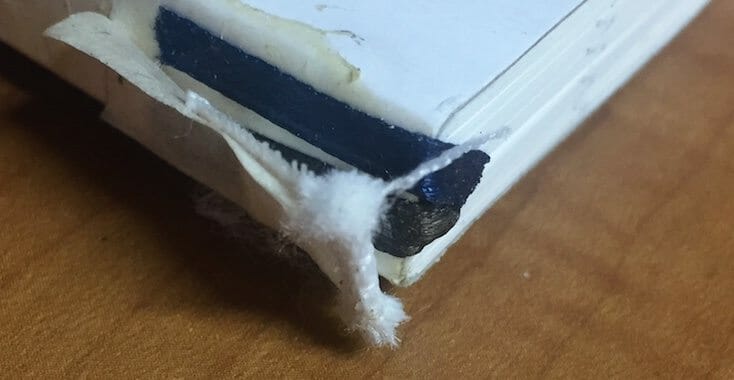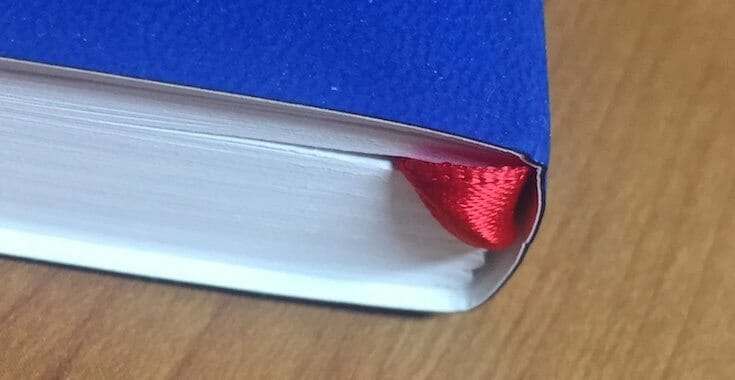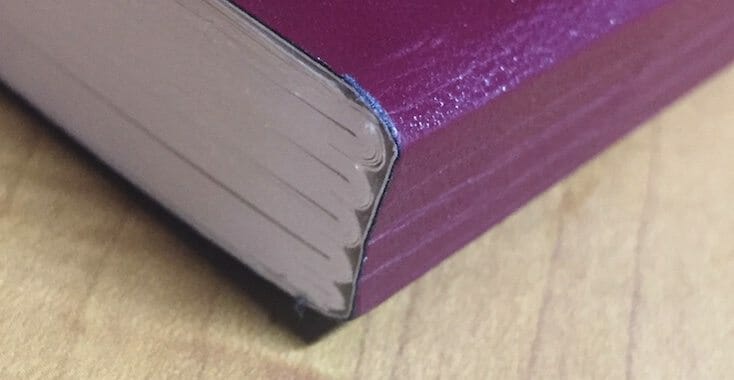Yesterday I described some of the steps I’ve taken over the last year in my quest to create what would be the perfect writer’s journal.
Difficulties finding, evaluating, and specifying the materials in the journal took many months, largely due to the way offset book printers are set up to deal with inquiries.
However, after a lot of research and testing, with help from print salesmen and various customer service reps, I had managed to finally get the exact specifications for each part of the book.
I had to keep emphasizing to the people I was dealing with that the materials themselves were crucial to the goal. In printing, like lots of other businesses, some supplies are commodities, which you can swap with little difference in the end result.
For instance, at one point I had some productive conversations with a highly experienced print broker about manufacturing the journals in Asia. Although production would take longer, the prices were substantially lower, and that’s always good news.
But here’s the problem. Due to the way materials are sourced, my broker could not guarantee that the paper used for the first run of books would be exactly the same as the paper used on subsequent runs.
That ruled out this attractive option. In a blank book like a journal, what exactly are you selling?
In my case, the care with which I was researching and specifying materials, the materials themselves would become a selling point for the journals. But if I couldn’t count on the paper being the same, how could I market the materials the journals are made from?
Like every other effort along these lines, this took weeks to come to a conclusion, and as in most cases, that conclusion was that it wouldn’t work. Back to the drawing board.
Binding Dilemmas
I wrote recently about the wide variety of lay-flat bindings that can be produced by book printers.
This capacity, of a journal that can be opened and laid flat at any point in the book, was the most important consideration I had about producing the WriteWell Writers’ Journals. I hate fighting with a book while I’m trying to write in it, and I was determined to find a binding style that suited my vision for the journals.
This ruled out perfect binding in which the edges of the folded sheets are ground off and the book block is glued to a cover. Perfect binding usually results in a book with a “tight” spine that won’t open flat.
There are a number of proprietary lay-flat binding systems, and I priced those out, too.
But when the estimates came back, I was astonished at how the cost exploded.
In the end I decided on a sewn binding because there is no more secure way to bind a book, and a sewn book is never going to fall apart, or have pages come loose. It’s also an archival method of binding that should ensure the journals last a lifetime.
With the right adhesive and the right method, you can use sewn bindings to create a sturdy book that will lay flat and will last forever.
Here’s an example of a sample that’s been torn apart to show how the ribbons are glued to the inside of the spine. This sample, although it was sewn, simply would not lay flat:

Other bindings failed for different reasons. Here’s a sample book made for me by one of the printers I was dealing with.
This one got rejected because the cover overlapped the pages, and the way the spine was created caused serious creases on the cover material every time you opened it. Despite the very pleasant texture of this material, it marked easily. That won’t work for journals that are handled a lot.

As I honed in on the “perfect” journal, even good samples presented problems. Here, I’ve got the right paper, the right covers (they are gorgeous) and the right size. Although the binding lays perfectly flat, notice there’s no ribbon.
When I asked about it, they told me this binding could not accommodate a ribbon. I found this odd, since the ribbon place marker was a “must have” right from the beginning. Also note how the spine creases quite a bit when the book is opened. Some of this is unavoidable, but if the creasing is extensive, it can detract from the aesthetic of the journal:

A Progress Report
As you may be able to guess from this post, I’m about 95% of the way to my goal.
But not quite there yet.
In fact, today I’m waiting to get yet more samples, and this time, I hope to be able to show you the final WriteWell Writers’ Journal: with lay flat binding, great paper, a pleasure to hold, carry, and use, and at a reasonable price.
I look forward with great anticipation to that day, hopefully not too far off at this point.
(You’ll be the first to know when my new journals are available, and qualify for special pricing, if you sign up to the early notification list here: WriteWell Writers’ Journals)


